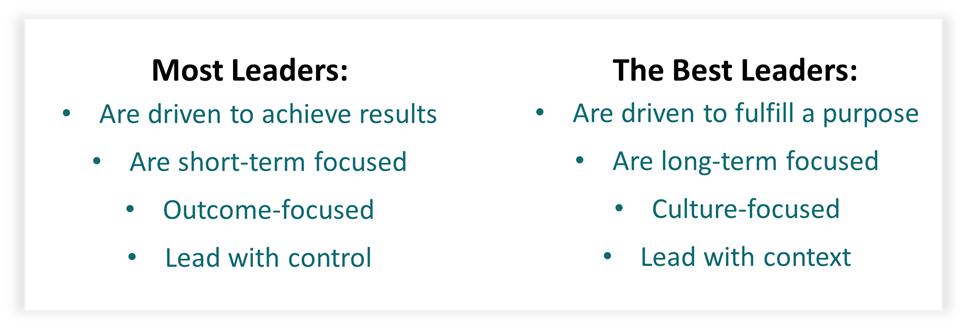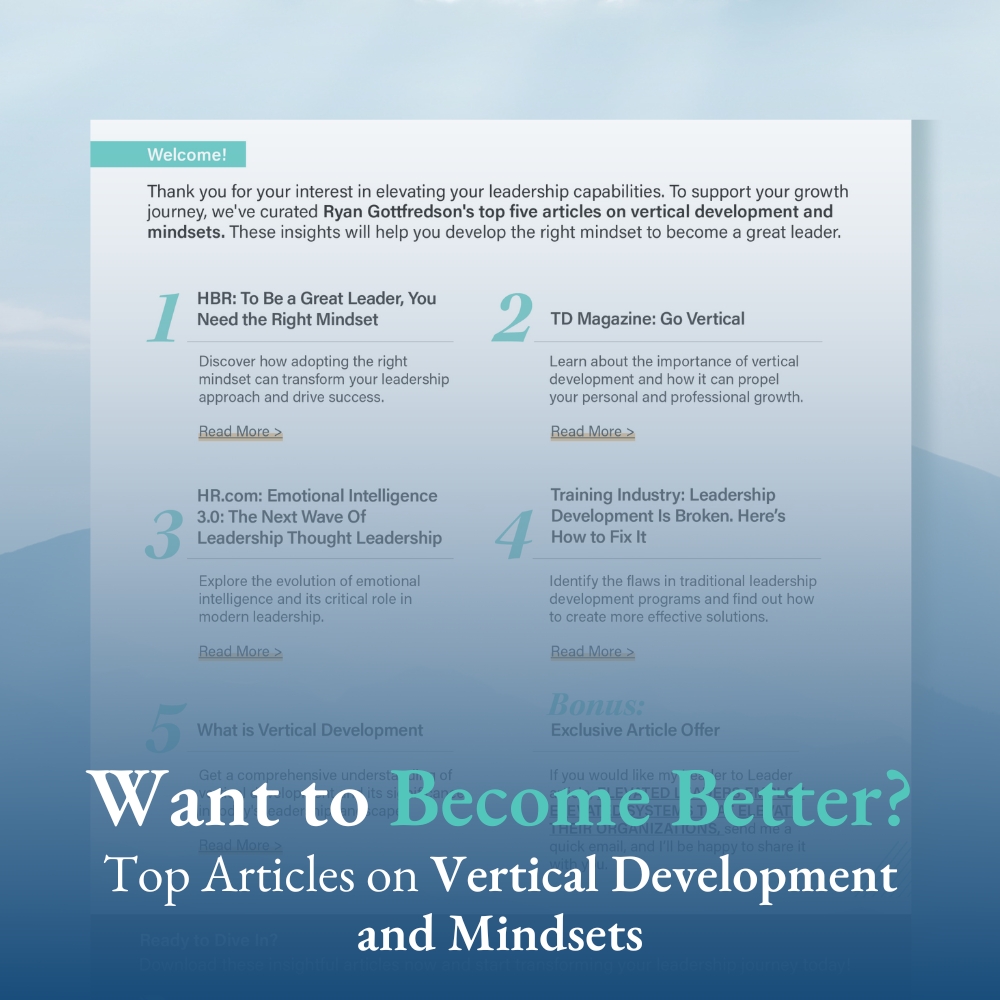Look at the figure below, and ask yourself which side is a better reflection of your organization’s leadership culture?

How Leaders Generally Operate
Research has found that 85% of leaders operate more like the column on the left than on the column on the right. And, in my work with organizations, my experience confirms that.
While there can be some benefits for leaders operating like “Most Leaders,” these benefits generally are only experienced in the short term.
But, when I work with organizations that are run in a fashion patterning “Most Leaders,” here are the issues that are generally present:
- There is a high degree of burnout
- There is little clarity about the organization’s purpose, mission, vision, values, and strategy
- The culture is ok, at best
- Employees don’t feel empowered
- Leaders operate as firefighters instead of as strategic leaders
- Leaders consistently complain about the inadequacy of those they lead
- There are escalation issues
- Healthy accountability does not exist
Why Do Leaders Operate This Way?
What explains why 85% of leaders operate like “Most Leaders,” resulting in the list of issues above?
While I think there are several frameworks that can be used to answer this question, I want to share a concept that answers this question in perhaps the simplest way possible. It is a concept that Eduardo Briceno has made popular through his book, The Performance Paradox: Turning the Power of Mindset Into Action, and TED Talk: How to get better at the things you care about.
Two Zones of Operation
People can operate in one of two zones of operation:
- The Performance Zone
- The Learning Zone
And, we can toggle back and forth between both zones of operation at different times and in different contexts.
Performance Zone: When we operate in the performance zone:
- Our focus is on achieving results and delivering outcomes
- We prioritize tasks, meeting deadlines, and ensuring high performance and efficiency
- We leverage existing strengths and skills (and avoid having to go through the efforts of developing new strengths and skills)
- We thrive under high pressure
- We are goal-oriented
- We place a strong focus on measurement and results
Learning Zone: When we operate in the learning zone:
- Our focus is on growth, development, and improvement (because we want to perform better in the future)
- We create space for experimentation, feedback, and skill development
- We are willing to try out developing strengths and skills in our efforts to perform
- We try to create space for psychological and experimental safety
- We recognize that mistakes and failures are part of the process of growth, development and improvement
- We create space to reflect on past performance and set goals to continually improve
- We encourage team innovation
Reflect On the “Most Leaders” and “Best Leaders” List
Knowing about these two zones of operation:
- What zone do “Most Leaders” operate in?
- What zone do the “Best Leaders” operate in?
From my experience, the best explanation for why leaders operate like “Most Leaders” and experience the list of leadership issues above is because they operate in Performance Zone almost 100% of the time.
Something I Find Fascinating
In Eduardo Briceno’s work, he commonly says that there is a “time for Performance Zone” and a “time for Learning Zone.” And, he give the example of how we should be in Performance Zone during games and Learning Zone during practice.
While there is merit to this idea, what I have found studying great leaders and great performers is that they have a unique capacity to get in and stay in Learning Zone in the times they are expected to perform. In fact, they have learned that they develop and grow the most by being in Learning Zone in high-stress performance contexts.
Now, I am not saying that leaders and people should never get in Performance Zone, but I am suggesting that leaders and people get in Performance Zone more than what is beneficial for them, their team, and their organization.
What Can Be Done About This?
If we want to elevate the leadership culture in organizations, we need to:
- Help leaders understand these two zones of operation
- Help leaders vertically develop so that they can have wider windows of tolerance, which will better allow them to get in and stay in Learning Zone in performance contexts
If you would like help with either of these two things, let’s connect.










